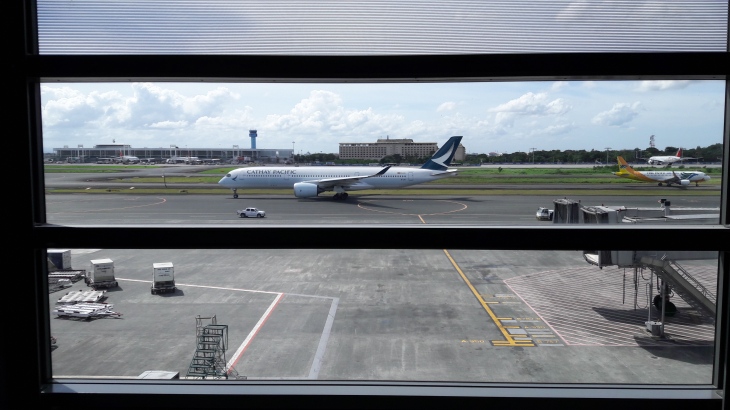
Will interest rates affect the number of flights? Changi Airport’s Terminal 2. Pic/Shukor Yusof
US interest rates were raised on December 14 – the first time in a year – with the Fed hiking its short-term rate to a range of 0.5%-0.75%, from 0.25%-0.5%. Fed chairwoman Janet Yellen said as part of the central bank’s “dot plot”, three more rate increases will take place in 2017, instead of two.
The Fed is upping rates because there is an improvement in the US economy and its labour market. The central bank is starting from a rather low level of almost nought percent interest rates, and the coming rate hikes are expected to be slow. That means the impact won’t be felt so soon.
That said, we are seeing a firming of the USD in the past 24 hours, which happens when rates go up. That’s good news for US importers but bad for exporters. There’s a risk that if the greenback continues to strengthen, it is not only harder for US products to be sold overseas; the consequence of exchange rate risk for emerging markets cannot be underestimated.
We think risks associated with exchange rate in the near term will have a far greater impact to Asian airlines than volatility in jet fuel prices.
This is because airline profitability is linked to currency values. Oil- and aircraft-related expenses (aircraft purchases and leases) are denominated in USD. Airlines’ profits will suffer if the USD’s value rises sharply in the next six to 12 months.
Exchange rates also affect inbound and outbound travel. Americans traveling abroad will find their currency buys more; on the other hand, depreciation of Asian currencies will likely mean Asians thinking twice if they should fly or not.
So get ready for more turbulence!
In our view, the rise of the greenback will pose a serious challenge for airlines, including US carriers. Exchange rates at different points of sales (different countries) affect the analysis and optimization of airline prices.
For example, US carriers flying to Asia Pacific via Tokyo, such as Delta and United, will see a decline in revenue given the decline of the Japanese yen (JPY). The same could happen to flights say, from New York to continental Europe, with passengers buying tickets using euros (EUR) from the US carriers’ European websites.
An International Air Transport Association (IATA) Airline Cost Management Group (ACMG) report in 2013 concluded that a successful currency management and exchange rate risk mitigation could “easily add 10%-20% of the bottom line” while a lack of it “could erode the profits or increase losses by as much as 50%”. Scary, isn’t it?
What about borrowing costs for airlines, or leasing costs – won’t they go up? Robert Martin, the MD of Asia’s top lessor BOC Aviation (BOCA) and a shrewd forecaster of market trends, reckons 2017 will be just fine for most airlines. He isn’t worried about 2017, where lessors such as BOCA and others are still likely to be able to offer airlines reasonable rentals and attractive spreads. Aircraft financiers, too, are unlikely to make drastic changes to the cost of borrowing. The concern, Martin feels, is what happens in 2018…
Airbus A350 rewriting the book
First tier airlines that are taking deliveries of their Airbus A350XWB aircraft are maximising the plane’s excellent economics.
On October 23 Singapore Airlines (SIA) started flying Singapore to San Francisco direct using the aircraft and this week announced it plans to fly to Stockholm’s Arlanda Airport in May 2017 using the A350-900.
This will be a codeshare flight with Scandinavian (SAS) and part of the SIA-SAS joint venture. Both carriers are in the Star Alliance grouping. The journey has a short stop in Moscow before proceeding to Sweden.
From January 17, 2017 SIA will also be deploying the A350-900 to Manchester and then onwards to Houston. The Airbus plane replaces a Boeing B777-300ER that currently flies the sectors. The A350 will be configured into three classes namely business, premium economy and economy. Interestingly the change removes the first class offering that is now available on board the B777-300ER.
Meanwhile, Cathay Pacific too is deploying an A350 from June 2017 for its Hong Kong to Manchester sector. Frequencies will be raised to 5x weekly, from 4x currently using the B777. We believe Cathay will eventually up the frequencies to daily flights.

A Cathay Pacific A350 taxiing at NAIA in Manila. Pic/Shukor Yusof
What SIA and Cathay are doing reinforces the value of the A350XWB – a plane that offers the lowest trip cost compared to the B777, while extracting the most yields. We understand loads on the carriers’ A350 flights have been healthy and with more frequencies there is the prospect of rising freight business as well.
